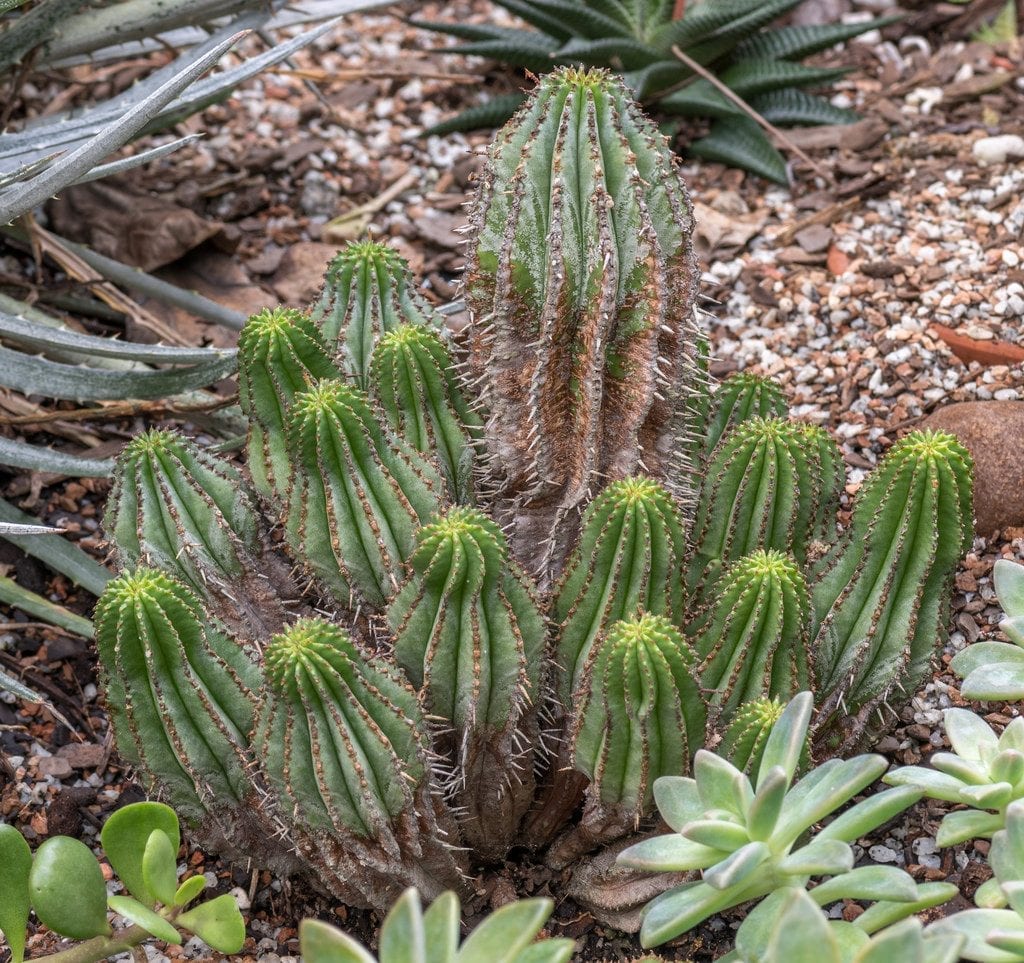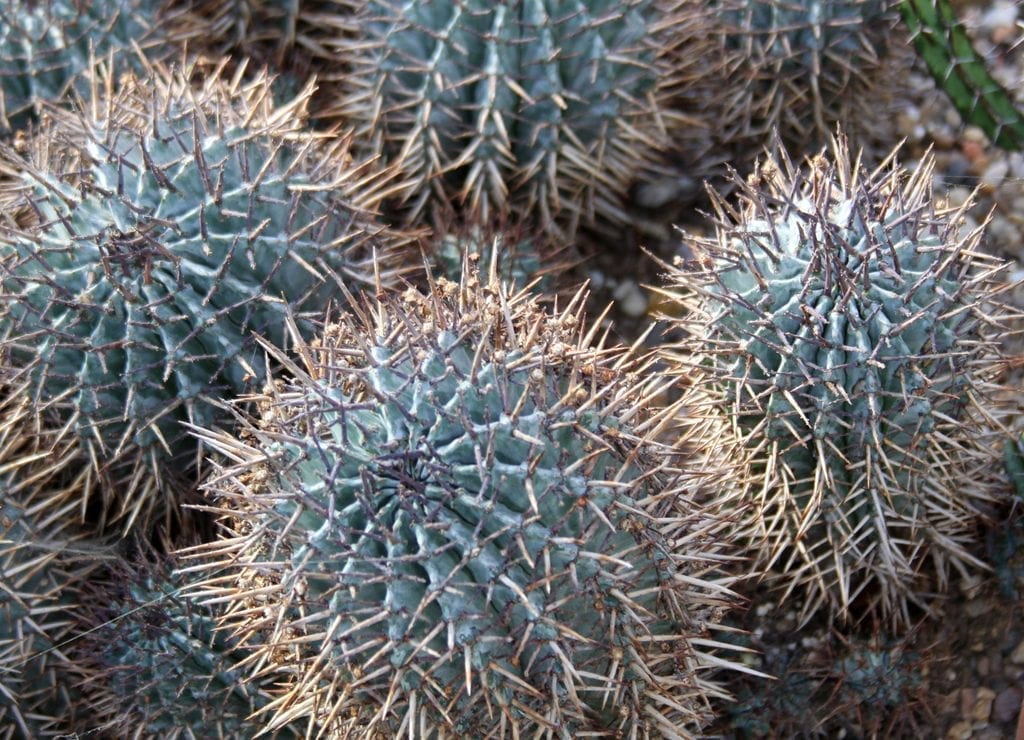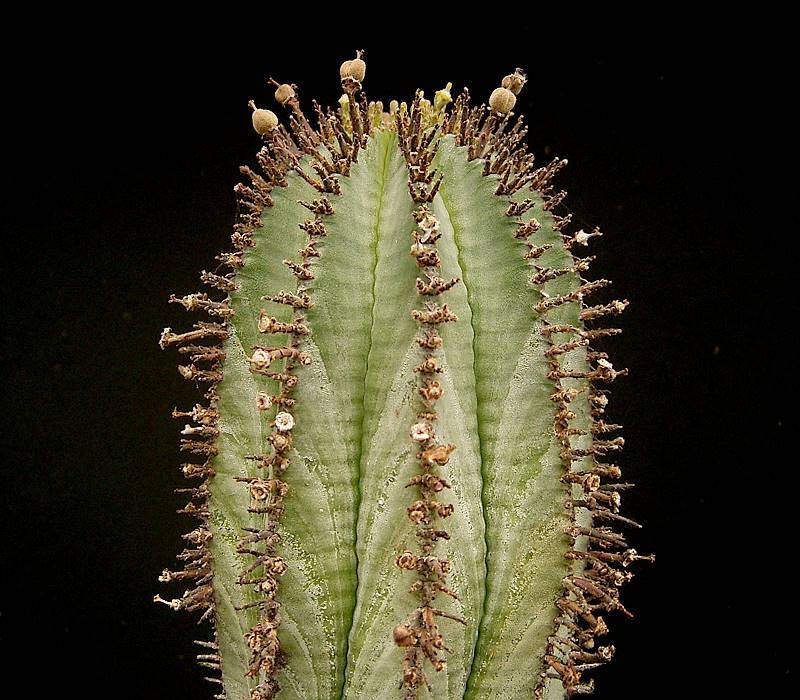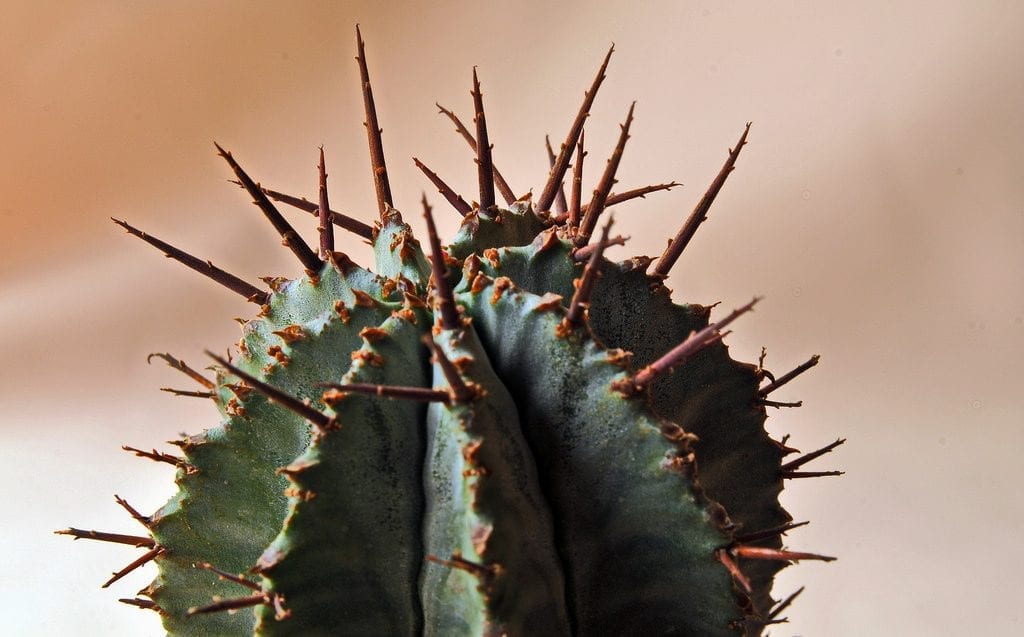
La horrid euphorbia He has a surname that doesn't really suit him too much 🙂, and it is that although he has thorns, they are harmless. In addition, although its bearing is columnar, it does not grow much; What's more, it can be grown in pots throughout its life without problems, since it does not need much attention.
As if that were not enough, it is easy to find it for sale in any nursery or garden store at a really low price; so ... why not make a hole in the yard? We tell you how to take care.
Origin and characteristics

Our protagonist is a succulent plant endemic to South Africa whose scientific name is horrid euphorbia, but which is popularly known as African milk barrel. It belongs to the Euphorbiaceae family, and like its sisters, its body contains a latex that is toxic. Reaches a maximum height of 1 meter and thickens up to 38cm in diameter.
The spines are usually dark, reddish in color at first, but can vary somewhat depending on the variety. The flowers are very small, greenish-yellow or purple, and appear in summer.
What are their cares?

If you want to have a copy, we recommend that you provide it with the following care:
Location
La horrid euphorbia is a plant that it must be placed outside, in full sun. Of course, if it was cultivated protected from the sun, you have to get used to it little by little, otherwise it would burn easily.
Earth
It can be both in a pot and in the garden, so the soil will be different depending on where you have it:
- Flower pot: I advise planting it in a universal culture substrate mixed with equal parts perlite. You can buy the first here and the second here.
- Garden: it grows in well-drained soils, so if yours is not, you must make a planting hole of about 50cm x 50cm and mix the soil that you have removed with perlite in equal parts.
Irrigation
The frequency of irrigation will vary greatly throughout the year, since the soil loses its moisture faster in summer than in winter. Likewise, it must be taken into account that the horrid euphorbia It is very sensitive to waterlogging, to the point that it quickly rots if overwatered. For this reason, and since not all climates are the same, you I recommend checking the humidity by doing any of these things:
- Dig about 5 or 10 cm around the plant: if you see that at that depth the soil is dark and cool, do not water.
- Use a digital moisture meter: it is a device that will tell you instantly how wet the soil that has come into contact with the meter is. But to be truly reliable it is preferable to use it again, inserting it closer or further from the plant.
- Weigh the pot once it has been watered and again after a few days: wet soil weighs more than dry soil, so this difference in weight can guide you in knowing when to water.
But if you still have doubts, let me tell you that more or less should be watered about 2 times a week in summer and every 10 or 15 days the rest of the year. During the winter it is watered even less: every 20 or 30 days, especially if there is frost.
Subscriber

It has to be paid from early spring to late summer with fertilizers for cacti and other succulents following the indications specified on the product packaging. If it is potted, use liquid fertilizers so that the drainage remains good.
Planting or transplanting time
Plant your horrid euphorbia in the garden in spring, when the risk of frost has passed. If you have it in a container, change it to a larger one every 2 or 3 years.
Pruning
It is not necessary. The only thing that should be removed are the stems that are drying out.
Plagues and diseases
It's very tough. But if the frequency of irrigation is not adequate, or to be more precise, if it is watered excessively, it can be affected by fungi which will first rot the roots and then the aerial part. It is treated with fungicides, although the ideal is to let the soil dry between waterings.
It is also important to watch the mollusks (snails and slugs), since they usually eat everything. In this link you have a link with remedies to avoid this.
Multiplication
By seeds or cuttings in spring or summer. Let's see how to proceed in each case:
Seeds
The step by step to follow is the following:
- First, a pot of about 10,5 cm in diameter is filled with universal growing medium mixed with perlite in equal parts.
- Then, it is watered conscientiously and the seeds are placed on the surface.
- They are then covered with a thin layer of substrate.
- Finally, the pot is placed outside, in semi-shade.
If all goes well, they will germinate in 2-3 weeks.
Cuttings
Do the following:
- First, a cutting is cut and left to dry for about 8 days in semi-shade.
- Then the base is impregnated with homemade rooters.
- Next, plant it in a pot of about 10,5cm in diameter with previously watered universal cultivation substrate.
- Finally, it is placed outside, in semi-shade.
It will root soon, in a week or two.
Rusticity
Ideally, it should not drop below 5ºC, but from experience I can tell you that if it drops to -1,5ºC in a timely and brief way, it will not be greatly affected.

What did you think of horrid euphorbia?